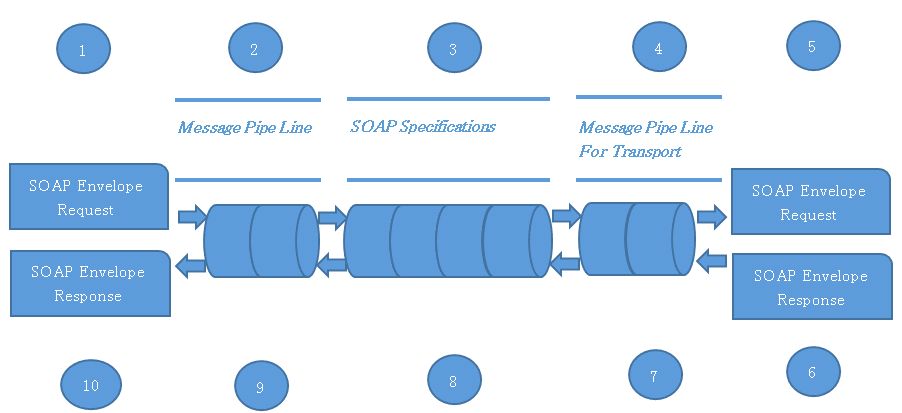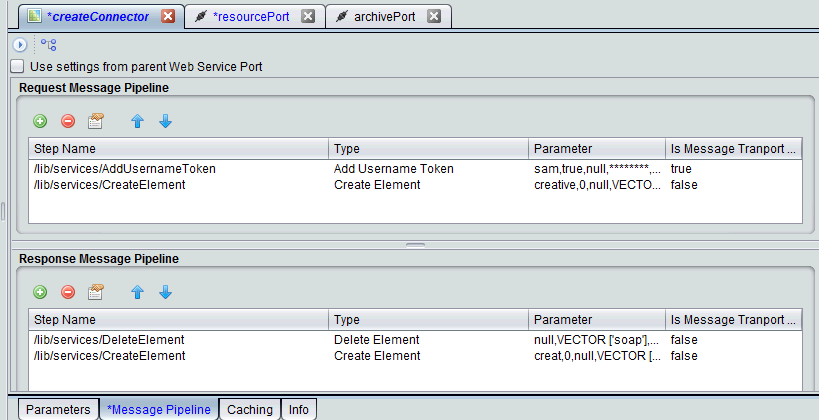

1. Create a SOAP request by executing the operation. | 6. The SOAP response message is received from the service side. |
2. Message pipelines that are defined as request. | 7. Message pipelines that are defined as response. |
3. The SOAP request message is handled according to the SOAP specifications that are defined in the contract. | 8. The SOAP response message is handled according to the SOAP specifications that are defined in the contract. |
4. Message pipelines that are defined as request.. | 9. Message pipelines that are defined as response. |
5. The SOAP request message is sent to the service side. | 10. The SOAP message is received. |

Request Message Step Types | Response Message Step Types |
Add Username Token | Create Element |
Create Element | Custom |
Custom | Delete Element |
Delete Element | Log Message to File |
Encrypt Element | Process Security Header |
Log Message to File | Set Environment From Node |
Set Environment From Node | Set Node From Environment |
Set Node From Environment | |
Sign Element |